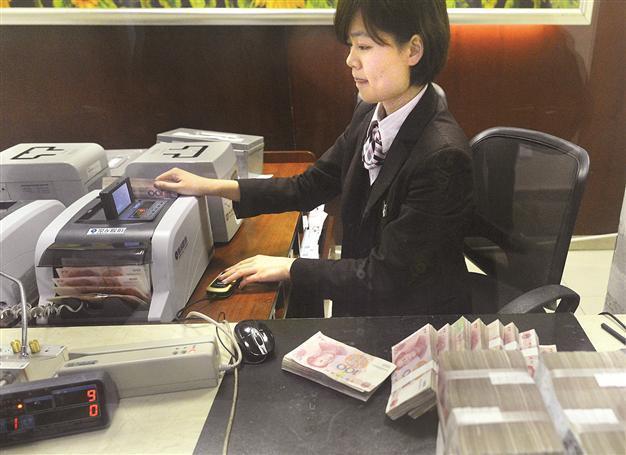China cuts bank reserve ratio requirement as growth slows
BEIJING - Agence France-Presse

REUTERS Photo
China’s Central Bank announced on April 19 it would cut the level of funds that commercial banks must
hold in reserve by one percentage point, the second such move this year to boost lending.
The move, effective April 20, comes days after the world’s second largest economy reported its worst quarterly growth figure for six years.
In a statement on its website, the People’s Bank of China (PBoC) said it will give an additional one-percentage-point RRR cut to banks for agricultural services and a further two-percentage-point cut to the Agricultural Development Bank of China.
It will also give a 0.5 percent cut to certain banks that give agricultural or small-business loans.
The cuts will “further enhance the ability of financial institutions to support restructuring,” the PBoC said.
The reduction in the reserve requirement ratio (RRR) -- the amount of cash banks must keep on hand -- follows a similar move in early February, which was the first across-the-board cut since May 2012.
Helen Qiao, greater China economist at Morgan Stanley, told Bloomberg News that the latest cut was “warranted given the sharp slowdown”.
“The move is positive, showing policymakers are trying to offset the impact of potential capital outflow and stabilize the macro environment,” Qiao said, adding that the cut “shows the intensification of policy easing”.
China’s gross domestic product (GDP) growth slowed to 7.0 percent in the first quarter from 7.3 percent in the final three months of last year, marking the worst result in six years.
China’s economy expanded an annual 7.4 percent in 2014, its worst performance since 1990.
Economic data have continued to disappoint this year, raising alarm bells that growth is weakening too quickly, despite authorities’ acceptance of a more sustainable growth model that places greater emphasis on consumer spending to drive expansion.
